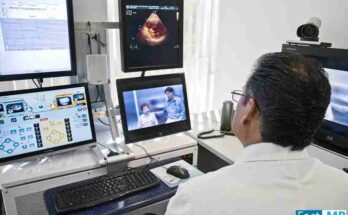Advancements in technology have revolutionized various industries, and the field of healthcare is no exception. One area that has seen remarkable progress in surgical techniques. Traditional surgical techniques have been redefined and enhanced through innovative technologies, leading to improved patient outcomes, shorter recovery times, and enhanced precision. In this blog post, we will explore some of the groundbreaking innovations in surgical techniques that are reshaping the landscape of medical procedures.
- Robotic-Assisted Surgery- Robotic-assisted surgery has emerged as a game-changer in the field of surgical techniques. With the assistance of robotic systems, surgeons can perform complex procedures with enhanced precision and control. These robotic systems provide a magnified, high-definition 3D view of the surgical site, allowing surgeons to make precise movements with smaller incisions. For example, the da Vinci Surgical System enables surgeons to perform minimally invasive procedures in various specialties, such as urology, gynecology, and general surgery, with greater accuracy and reduced recovery times.
-
- Some recent developments in robotic-assisted surgery:
- Minimally invasive procedures with a single incision, reducing patient trauma and improving cosmetic outcomes.
- Exploration of Surgical Imaging Robots with flexible arms that can navigate complex anatomical structures, enabling surgeries in challenging areas such as the colon or blood vessels.
- Advancements in algorithms and robotic systems that analyze medical data, plan surgical steps, and execute precise movements autonomously, potentially enhancing surgical outcomes and reducing human intervention.
- Utilizing AI algorithms to analyze patient data, assist in surgical planning, and provide real-time guidance during procedures. Machine learning improves the accuracy and adaptability of robotic systems.
- Performing surgery on remote patients using robotic-assisted systems, allowing expert surgeons to provide specialized care to those in distant locations, enabled by high-speed internet connectivity and advanced robotics.
- Some recent developments in robotic-assisted surgery:
- Image-Guided Surgery- Image guided surgery, also known as navigation surgery, combines imaging technology with real-time tracking systems to provide surgeons with accurate guidance during procedures. By integrating preoperative imaging, such as CT scans or MRI, with intraoperative tracking systems, surgeons can visualize the precise location of surgical instruments and their position relative to critical structures. This technology is particularly valuable in complex surgeries, such as brain and spinal surgeries, where precision is paramount and minimization of damage to healthy tissues is crucial.
-
- Surgeons can overlay digital images and information onto the patient’s anatomy in real-time, providing enhanced visualization and guidance during procedures.
- Patient-specific 3D models are created from medical imaging data, allowing surgeons to better understand complex anatomical structures and plan surgeries with greater accuracy.
- Advanced imaging technologies, such as intraoperative magnetic resonance imaging (iMRI) and intraoperative computed tomography (iCT), enable real-time imaging during surgery
- Integrated systems combine imaging data with real-time tracking, guiding surgeons during complex procedures. Navigation systems utilize electromagnetic medical sensors or optical trackers to precisely track instruments in relation to the patient’s anatomy, improving accuracy and reducing risks.
- AI algorithms analyze medical images to assist surgeons in identifying abnormalities, providing automated measurements, and aiding in surgical planning.
- Minimally invasive surgery (MIS) has revolutionized the way many surgical procedures are performed. Instead of large incisions, MIS utilizes small incisions and specialized instruments equipped with cameras and microscopes. This approach reduces trauma to surrounding tissues, leading to faster recovery times, less pain, and decreased risk of complications. Procedures such as laparoscopy and arthroscopy are prime examples of minimally invasive techniques that have become standard in many surgical specialties.
- Key developments in the minimally invasive surgery sector:
- Integration of Artificial Intelligence (AI) and Machine Learning for decision-making and surgical planning.
- Augmented Reality (AR) and Virtual Reality (VR) for enhanced visualization and surgical navigation.
- Smart surgical instruments with sensors and tracking systems for real-time feedback.
- Advancements in non-invasive and micro-invasive techniques, enabling less invasive procedures.
- Development of robotics and artificial muscles for improved surgical dexterity.
- The advent of 3D printing has opened up new possibilities in surgical planning and custom-made implants. Surgeons can now generate patient-specific models from medical imaging data, enabling them to thoroughly plan and practice complex surgeries before the actual procedure. These models allow surgeons to evaluate various approaches, anticipate challenges, and optimize surgical outcomes. In addition, 3D printing has facilitated the production of personalized implants and prosthetics, tailored to fit the patient’s anatomy precisely.
-
- Latest developments in 3D printing include patient-specific implants and prosthetics, surgical guides and templates, bio-printing of living tissues and organs, customized surgical instruments, educational models and simulators, biodegradable implants, and drug delivery systems.
- Laser technology has found a multitude of applications in the field of surgery. Lasers are used in various procedures, including eye surgeries, dermatology, and even cancer treatments. They offer precise cutting and cauterization capabilities, minimizing bleeding and reducing the need for traditional surgical tools. Laser surgery enables surgeons to operate with enhanced precision, resulting in smaller incisions, faster healing, and reduced scarring.
- Recent developments in laser technology for surgery include laser-assisted minimally invasive surgery, laser tissue welding, photothermal therapy, laser ablation and vaporization, laser-assisted imaging, and laser-assisted wound healing.



